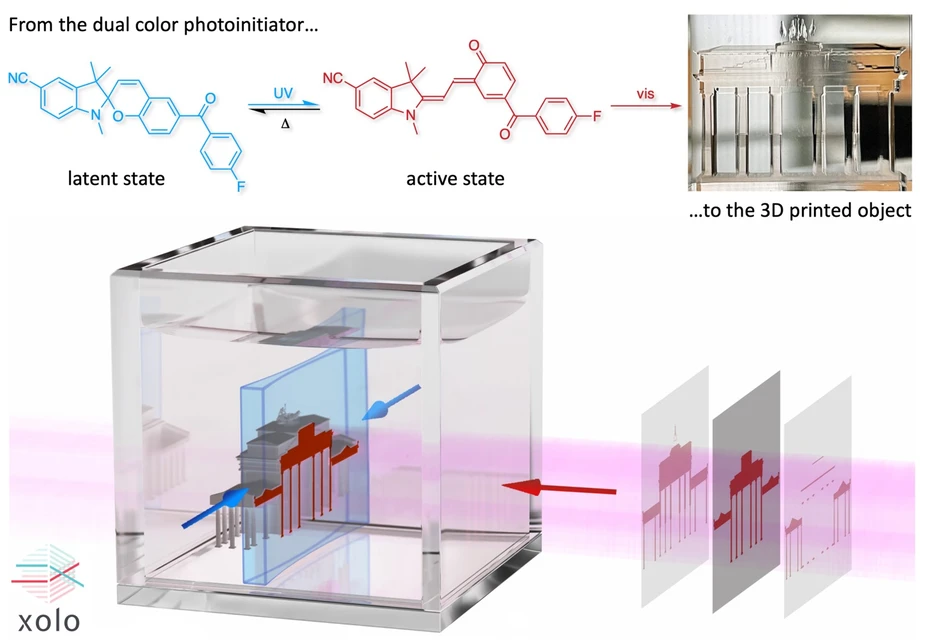Xolography as new volumetric 3D printing method
Adlershof start-up develops novel printing process that can produce smooth surfaces at high speed
It looks like science fiction but in fact could be the future of 3D printing: A blue slice of light wanders through a liquid, while light projections emerge through the window of a glass vessel. Resembling the replicator of the Star Trek spaceships, the desired object materializes. What used to take hours soon floats in the liquid in the vessel, is then removed, and cured under UV light.
The underlying process – xolography – was developed by a team led by chemist Stefan Hecht from IRIS Adlershof, physicist Martin Regehly, and the founder Dirk Radzinski in the startup company xolo GmbH in Berlin Adlershof over the past two years. For the first time, they now describe their unique method in the renowned journal Nature.
Their invention is based on Hecht’s specialty: photoswitchable molecules, which only at the intersection (xolography) of light rays of two different colors allow precise curing of the starting material in the entire volume (holos). In combination with a new printing process (xolography) based on a laser-generated light sheet and projected cross-sectional images, the desired objects are generated from virtual 3D models.
In contrast to conventional 3D printing, in which the objects are created layer by layer, the advantages of xolography are the significantly higher build speed that is due to the higher efficiency of combining two linear one-photon processes as opposed to non-linear two-photon stereolithography. The faster build speed does not compromise for resolution and thus smooth surfaces can be created. Moreover, fully assembled multicomponent systems can be fabricated in just one step.
Hecht is amazed “to see how fast this has been moving from an idea to xolo’s first prototype printer, the XUBE. Working in a highly interdisciplinary team including chemists, physicists, materials scientists, and software developers with a clear focus and dedication, we have been able to develop xolography as a powerful new method.” He is excited about the many opportunities ahead: “The beauty is our method’s versatility as we can print hard as well as soft objects. This should have major implications for the future manufacturing of optical, (micro)fluidic, and biomedical devices.”
Original publication:
“Xolography for linear volumetric 3D printing”
M. Regehly, Y. Garmshausen, M. Reuter, N.F. König, E. Israel, D.P. Kelly, C.-Y. Chou, K. Koch, B. Asfari, and S. Hecht
Nature 588 (2020) 620, DOI: 10.1038/s41586-020-3029-7
www.nature.com/articles/s41586-020-3029-7
Contact:
xolo GmbH
Dirk Radzinski
Volmerstraße 9, D-12489 Berlin
Email: info(at)xolo3d.com
www.xolo3d.com
Martin Regehly
www.mrvision.org
Stefan Hecht
www.hechtlab.de
Press release xolo GmbH, 23 December 2020
